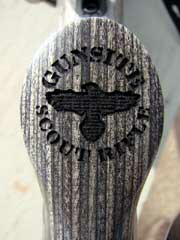 If you have read my review of the Ruger Gunsite Scout in .308 Winchester (Scouting Around – Part I: https://guntoters.com/blog/2014/11/15/scouting-around-part-i/, I presented a somewhat detailed view of the RGS and promised a range report. My, oh my, how time flies! Amidst the reviewing and shooting other firearms, I totally forgot about the RGS!
If you have read my review of the Ruger Gunsite Scout in .308 Winchester (Scouting Around – Part I: https://guntoters.com/blog/2014/11/15/scouting-around-part-i/, I presented a somewhat detailed view of the RGS and promised a range report. My, oh my, how time flies! Amidst the reviewing and shooting other firearms, I totally forgot about the RGS!
Well, I have to say that the RGS hasn’t aged a day; whereas, I have aged two years since that first review. However, and for those that are considering a “Scout” rifle, this review may come at an opportune time.
Since the first review, Ruger has since come out with the Ruger Gunsite Scout in .223/5.56×45 and I wish that they hadn’t – since I had purchased a Ruger American chambered in just that caliber (Ruger American Model 6913 .223 Remington Rifle: https://guntoters.com/blog/2015/01/25/ruger-american-model-6913-223-remington-rifle/). Had I know that Ruger would consider doing such a thing, I would have held out until they had. To tell you the truth, I would have purchased the RGS over the Ruger American. That’s not to say that the Ruger American is a poor choice, because it is an outstanding rifle and I was looking for a bolt-action backup to my MSR at the time, but I would have preferred the RGS over the American simply because I like the “Scout” concept.
After moving a bunch of stuff that had accumulated in front of the gun safe, the RGS was finally hauled out of the safe and was back in my hands. As I pulled the RGS from its Bore Store, I remembered why I liked this rifle – the caliber. I pulled the bolt away from its resting place and took a quick look through the 18” rifled barrel with its 1:10 twist rate and really started to look forward to firing some .308 ammunition through it.
I prepared the two optics that I was going to sight in; an AIM Sports 2-7×32 Dual-Illuminated Pistol/Scout Scope and a UTG DS3068 6.4-Inch ITA Red/Green Dot Sight with Integral QD Mount and Flip-open Lens Caps. It might seem odd that I would put a red-dot optic on a rifle such as the RGS, but it really was an experiment to see, once zeroed, which optic would be the quickest to lock on target and still expect a reasonable degree of accuracy. After all, the RGS is not intended for “sniping” as it is for covering my behind during a strategic withdrawal.
For ammunition, I had some “Factory Loaded” 168-grain .308 Winchester Sierra BTHP Match ammunition loaded for 2,500fps, PPU 165-grain PSP BT ammunition that it rated at 2,674fps, and some serious Winchester Razor Back Beveled Profile Protected Hollow Point 150-grain ammunition that is rated to clock out of the barrel at 2,810fps. On top of that, one of my shooting friends was bringing some light-loaded 165-grain match ammunition that he shoots regularly, and which he uses for placing little holes in selected points within playing cards. Let’s just say that he is highly efficient in doing so. I don’t want to say too much about his expertise because he just might read this and get all puffed-up and cocky on me.
Before you get all excited and worked up about how I am going to tell you that I nailed a postage stamp set at 400-yards in one shot, let me tell you that isn’t going to happen, Sparky! My local indoor range and gun club restricts my effort of shooting past 25-yards. My intention was to see how the RGS reacts in my hands while chasing a 100-yard zero at 25-yards. I hope to get to a true 100-yard range some time in the future (hopefully, within two years) and hope to be on paper at that distance with my efforts at this short distance.
I was starting out with the “Factory Loaded” 168-grain .308 Winchester Sierra BTHP Match ammunition loaded for 2,500fps to start with. Going to my favorite ballistics site, Gundata.org (http://gundata.org/ballistic-calculator/), and creating a chart for this load revealed that for a 100-yards zero, I needed to be about 0.5-inches low at 25-yards. That would provide a near zero at 50-yards and 100-yards with a trajectory path not exceeding 1” above or below the line of sight out to almost 140-yards. The calculated flight path is shown below.
For those who would say that zero is not the same for a “Factory Loaded” 168-grain .308 Winchester Sierra BTHP Match cartridge loaded for 2,500fps and some serious Winchester Razor Back Beveled Profile Protected Hollow Point 150-grain ammunition that is rated to clock out of the barrel at 2,810fps, I would agree. But, it is less than you would expect. See below for a comparison.
To put it bluntly, I am not going to be able to shoot, and have the bullets impact, at the exact same points as shown in the ballistic comparison chart. At distance out to 100-yards, it is just to close to call. The Winchester Razor Back Beveled Profile Protected Hollow Point 150-grain ammunition that is rated to clock out of the barrel at 2,810 fps, has the obvious advantage with velocity and energy. Both rounds would be well within what would be considered “combat accuracy,” “Minute-of Man,” or “Minute-of Deer” in all cases.
Meanwhile, and back at the range ranch, I set up a bench-rest position with a bi-pod that I had brought and commenced to bore-sight the scope and red-dot optic that would assure me that I could get, at least, on paper. The AIM Sports 2-7×32 Dual-Illuminated Pistol/Scout Scope would be up first followed by the UTG DS3068 6.4-Inch ITA Red/Green Dot Sight with Integral QD Mount and Flip-open Lens Caps.
I had several objectives in mind; the actual shooting of the rifle was secondary to how well the optics performed. It was important, to me, to know that I could remove and optic, re-install it, and see if it held zero. It was also important to me to see which optic was the most compatible with my intended use of the rifle, which to say, is not hunting but for sport and defensive use.
The initial zeros were set with each optic and getting down to shooting began, thanks to Mike, my friend and shooting companion who provided a Sight-Rite laser bore-sighting cartridge. Setting up the scope vs. bore with this devices was done in short order at twenty-five yards for a 100-yard zero.
For this session, I was using both 5-round, and 10-round glass-reinforced nylon polymer magazines that are available through Ruger. Although the magazines could be loaded from the top, the feed lips of the magazines are not metal-reinforced and it is simply better to load the magazines from the front. Both magazines feature an easily removable/installable, protective cap that protects the magazines and their contents. These magazines are available through Ruger or other on-line vendors.
The RGS incorporates the LC6 trigger mechanism. Ruger states the trigger pull at about 5 pounds. The trigger pull on this RGS is about 3.5 pounds according to my Lyman trigger-pull gage. The trigger pull is smooth and exhibits a crisp let-off with a mild after-travel. I did not find myself struggling with the trigger at all during the range session.
Prior to the range session, I had installed a slip-on LimbSaver recoil pad. The pad was not so much for recoil but for LOP and my long arms; however, I have to say that it certainly helped with managing the recoil of the RGS.
The Relative Recoil Factor (RRF) for the .308 Winchester is 1.95, according to the 5th edition of Ammo and Ballistics. As a comparison, the .30-06 has a RRF of 2.19 and the .223 has a RRF of 0.80.
In the table below rifle weight is given in pounds, free recoil energy is given in foot pounds, and free recoil velocity is given in feet-per-second. All recoil values have been rounded off to one decimal place.
The recoil energy and recoil velocity figures are taken from various sources including the recoil nomograph in the Handloader’s Digest 8th Edition, various online recoil calculators, the Remington Shoot! program or calculated from the formula given in the Lyman Reloading Handbook, 43rd Edition.
|
Cartridge |
Rifle Weight (lbs.) |
Recoil energy (ft. lbs.) |
Recoil velocity (fps) |
| .308 Win. (150 at 2800) |
7.5 |
15.8 | 11.7 |
| .308 Win. (165 at 2700) | 7.5 | 18.1 | 12.5 |
| .308 Win. (180 at 2610) | 8.0 | 17.5 | 11.9 |
Now, we can talk figures until the cows come home, but what matters is what recoil feels at your shoulder. The felt recoil of the RGS is quick and stout – period. Let’s just say that I was feeling the effects of the recoil the next day. But, then again, I don’t plan to go out shooting the RGS for fun and frivolity; there are lesser calibers that I enjoy shooting more than the .308 Winchester.
The A2-style flash hider does a great job on doing what it was intended to do; stifle muzzle flash. With the short 18-inch barrel of the RGS, there is plenty of muzzle flash.
Extraction and ejection, as with bolt-operation, is smooth and positive. The faster the bolt is operated, the better ejection of a spent cartridge is performed.
Even with being a left-handed long-gun operator, I found the three position safety lever, which is mounted on the right side of the receiver, easy to use.
Magazine extraction is positive; simply push the magazine release that is located just in front of the trigger guards, and the magazine drops free. Inserting a magazine is a little tricky, as the magazine needs to be squared with the magazine well and then pushed straight in and up, which is a bit different from “rocking” a magazine into place. The polymer magazines worked well and are easy to fill with preferred cartridges.
When a projectile leaves the muzzle of the RGS, there is plenty of “boom” that follows. I didn’t realize how much until I stepped back and let a few friends to shoot operate the RGS. Of course, shooting indoors amplifies the “boom” and shooting outdoors is preferred, but I had to work with what I had and where I was.
After a few shots with the AIM Sports 2-7×32 Dual-Illuminated Pistol/Scout Scope, the RGS was deemed socially accurate. I moved on to trying to zero and shoot with the UTG DS3068 6.4-Inch ITA Red/Green Dot Sight with Integral QD Mount and Flip-open Lens Caps.
While the UTG DS3068 6.4-Inch ITA Red/Green Dot Sight with Integral QD Mount and Flip-open Lens Caps is a good option, the AIM Sports 2-7×32 Dual-Illuminated Pistol/Scout Scope is a better option – for accuracy. I could get on target quickly with the red dot optic, but the magnified optic, albeit slower to get on target, produced the best results in regards to accuracy. Optics will get you to the target and I leave it to the reader to determine which would be best for their intended use of the firearm.
While the RGS would fit into the “that will do a great many things equally well…” classification of firearm, precision target shooting would not be one of those “things.” The RGS; however, is more than capable for hunting and defensive work.
IN CLOSING:
I walked away from the range session with an appreciation for the Ruger Gunsite Scout rifle, a somewhat sore shoulder, and a desire to become more proficient with the RGS. What was proven is that the RGS is capable of more accuracy than I could wring out of it during this first shooting session and that a 2-7×32 optic and the RGS makes for a compatible package.
The Ruger Gunsite Scout would fulfill the vision of Jeff Cooper’s vision of a “Scout” rifle; “The general-purpose rifle will do equally well for all but specialized hunting, as well as for fighting; thus it must be powerful enough to kill any living target of reasonable size. If you insist upon a definition of ‘reasonable size,’ let us introduce an arbitrary mass figure of about 1,000 lb (454 kg).”
If you are looking for firepower, in regard to cartridge capacity, the RGS is not going to deliver in that department (even with a 10-round magazine) for some and there are many other firearms that would fulfill that desire. For the rest of us, the RGS would probably serve as a “general purpose” firearm. If you are looking for extreme accuracy, again, the RGS would not probably fit your desire, but there are many rifles available that can and I would probably follow in your footsteps. The RGS is what it is, and if you can live with that, you will have an excellent tool to work with.
IN THE WORDS OF OTHERS:
Here are some links to video reviews by others. As you will see, it is highly advised that you shoot quality ammunition through the RGS and that there are varying viewpoints regarding the RGS:
- Ruger Gunsite Scout Rifle (Hickock45): https://www.youtube.com/watch?v=LhOnOFEH6ps
- Ruger Gunsite Scout Rifle ( Chapter 2 )(Hickock45): https://www.youtube.com/watch?v=IPoYwyxXo_U
- Ruger Gunsite Scout Rifle : The Tactical Bolt Gun: https://www.youtube.com/watch?v=iE_GNGWY8yU
And, here is a video with Jeff @ Gunblast.com on a newer version with Ruger upgrades:
Shooting the Ruger 308 Gunsite Scout Rifle with Polymer Composite Stock – Gunblast.com: https://www.youtube.com/watch?v=7h_GG54GVt8
RESOURCES:
- Rifle Recoil Table By Chuck Hawks: http://www.chuckhawks.com/recoil_table.htm
- GSM Outdoors Sight-Rite .243 Win/7mm-08 Rem/.308 Win Laser Bore Sight Brass Case BL243: https://www.cheaperthandirt.com/product/gsm-outdoors-sight-rite-243-win-7mm-08-rem-308-win-laser-bore-sight-brass-case-bl243-813628014560.do?sortby=ourPicks&refType=5
- Aim Sports 2-7X32 Dual III. Long Eye Relief Scope with Rings – http://www.amazon.com/gp/product/B003BRB1PM/ref=oh_aui_detailpage_o01_s00?ie=UTF8&psc=1
- Warne Scope Mounts Low Matte Quick Detach Rings (1-Inch) – http://www.amazon.com/gp/product/B0002MJZ2A/ref=oh_aui_detailpage_o01_s00?ie=UTF8&psc=1
- Ruger Magazine Ruger Gunsite Scout 308 Winchester Polymer Black – http://www.midwayusa.com/product/1366829505/ruger-magazine-ruger-gunsite-scout-308-winchester-polymer-black
- UTG DS3068 6.4-Inch ITA Red/Green Dot Sight with Integral QD Mount and Flip-open Lens Caps (not shown) – http://www.amazon.com/gp/product/B004HIFS8A/ref=oh_aui_detailpage_o00_s00?ie=UTF8&psc=1
- Bore Stores: http://borestores.com/
![]()



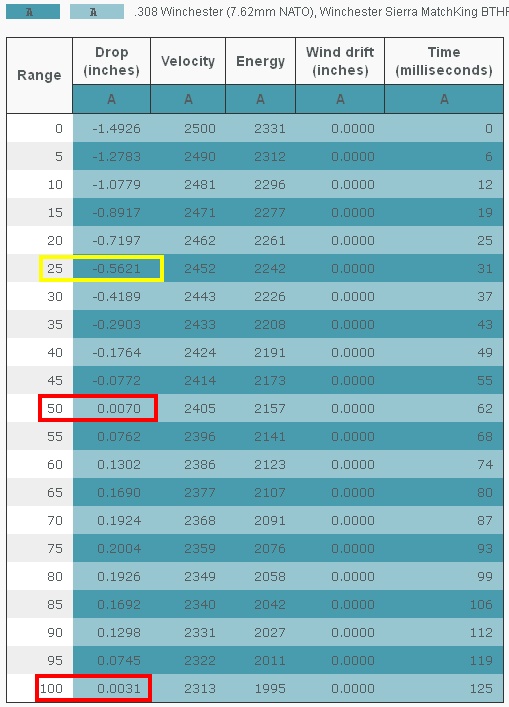
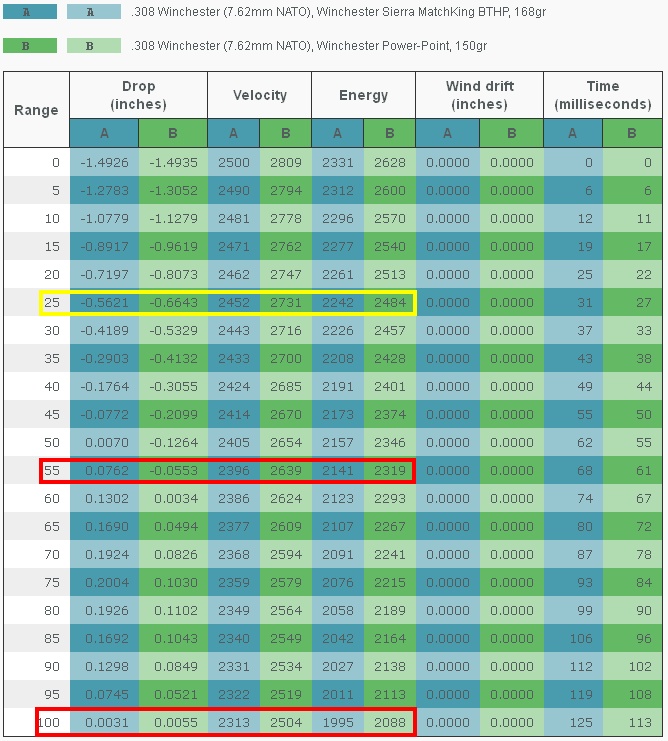
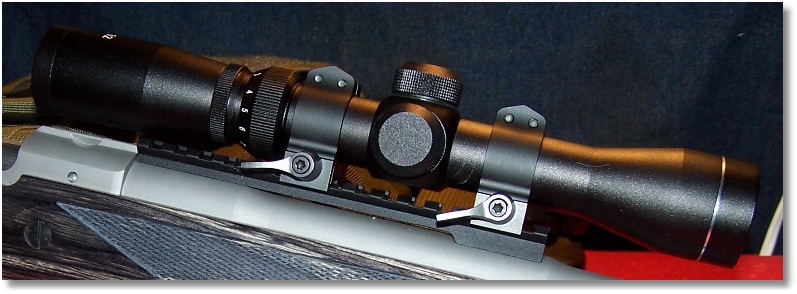
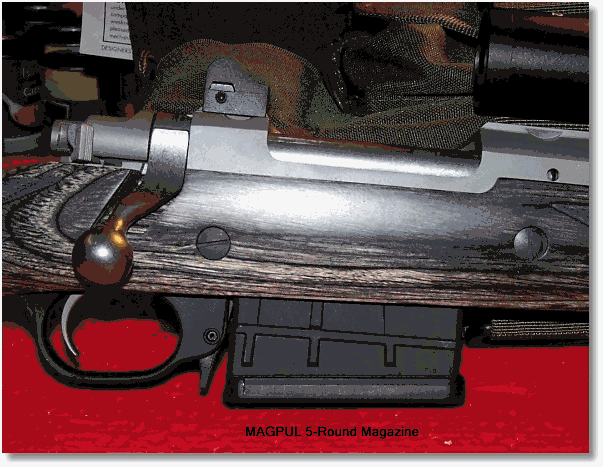

One Response to Scouting Around – Part II (Ruger Gunsite Scout Review - Continued – Finally!)